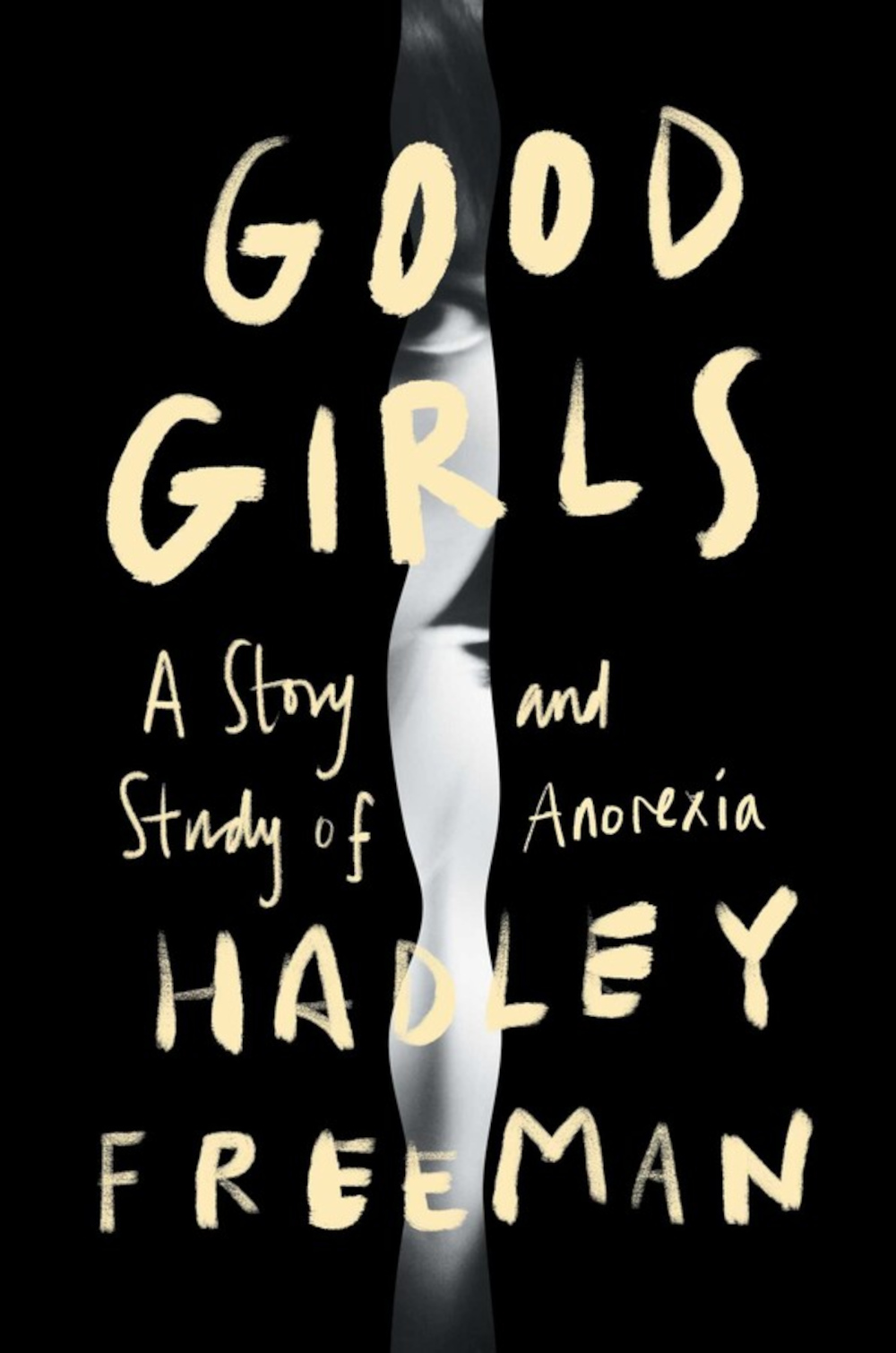The comment that sent Hadley Freeman spiraling into anorexia as a young girl was seemingly benign. A schoolmate who was skinny said she felt envious because she wished she was “normal like you,” an innocuous remark that pitched Freeman into a descent towards self-starvation. As she observes in “Good Girls: A Story and Study of Anorexia,” there’s a difference between trigger and cause: anything could have had a similar effect because she was so vulnerable. For women and girls predisposed to the illness, she writes, “the anorexia was a bomb inside us, just waiting for the right time, the single flame, the trigger.”

BOOK REVIEW — “Good Girls: A Story and Study of Anorexia,” by Hadley Freeman ( Simon & Schuster, 288 pages).
Freeman, a staff writer for The Guardian, unpacks her history with the illness, which spanned her adolescent and early adult years during the 1990s. She also tracks down former patients at the hospitals in which she spent time as a teen, and interviews more than a dozen psychiatrists and other care workers. Her aim is to better understand a condition that dogged her youth and has long resisted explanation and treatment.
Anorexia nervosa is an eating disorder in which people restrict their food intake and lose weight, sometimes fatally. Most with the disorder are female — Freeman puts the figure at 90 percent — and although the condition affects less than 1 percent of the population, recent years have seen an increase in cases among children under 12. During the Covid-19 pandemic, associated hospitalizations also rose. Anorexia has the highest mortality rate of all mental illnesses, Freeman observes.
By her own admission, Freeman’s was a pretty classic case of anorexia. She developed the condition at the age of 14, which led to nine hospitalizations (double the number of most patients she knew) at four different institutions between 1992 and 1995. Privately educated, she attended girls’ schools in New York and then in London with the children of minor celebrities as her peers.
Early on, she interrogates the assumption that anorexia largely afflicts White, wealthy girls; Black children, along with other children of color, may be less likely to have their illness recognized, she points out. And poor White kids also develop anorexia. (Although men also experience eating disorders, she chooses to focus on women in the book.)
Still, she writes: “The cliché about anorexia and privately educated white girls isn’t the full story. But that is very different from saying it’s the wrong story. After all, few embody that story more fully than me.”
Freeman has read studies and spoken to a wide range of experts, deftly folding their views into her account. She notes, for instance, that a potential link between anorexia and autism spectrum disorder was first drawn as long ago as the 1980s. But the symptoms of starvation can mimic those of ASD, Freeman writes. It can be hard to distinguish anorexic girls who are not autistic, but who exhibit ASD behaviors as a result of their distress, from those who also have autism, Anna Hutchinson, a clinical psychologist, tells her.
Gerome Breen, a psychiatric geneticist at King’s College London, sees more links between anorexia and obsessive-compulsive disorder, and suggests metabolic factors are also at work, such as connections between hormones controlling appetite and insulin. People with anorexia often have high metabolic rates and low blood sugar, says Breen.“So there is probably an interplay between the metabolic and psychological processes, in the sense that losing weight might be rewarding for them or evoke a greater magnitude of response than it would in someone with a less robust metabolism.”
In addition, research indicates that eating disorders are highly inheritable: 60 percent compared with 30 to 40 percent for depression and anxiety, according to Breen. Freeman traces her propensity toward anorexia from her mother to her maternal grandmother and to her dad’s side, too. “Maybe there was a dynamic within my family that taught me food was the medium through which women express unhappiness,” she ponders.
One of Freeman’s early clinicians was a man she calls Dr. R — a predatory figure who later lost his medical license for a “blurred and secretive relationship” with a patient. He ran the first hospital ward she entered, visiting once a week to choose the patient on whom he would bestow his attention. In the 1990s, eating disorder units were “laughably patriarchal,” she writes. “The male consultant was the king, the invariably female nurses reported to him and we, the female patients, were the lowly peasants who did as we were told by the big man and his female minions.”
Support Undark MagazineUndark is a non-profit, editorially independent magazine covering the complicated and often fractious intersection of science and society. If you would like to help support our journalism, please consider making a donation. All proceeds go directly to Undark’s editorial fund.
|
Freeman, whose previous books include her family memoir “House of Glass: The Story and Secrets of a Twentieth-Century Jewish Family,” brings her trademark sense of irony to this tale. She nails the isolated strangeness of her anorexia in a self-depiction that is both tragic and almost funny. “I talked to myself all the time when I was anorexic, silently and aloud,” she writes. “Who else would understand the sweet victory of squeezing in extra sit-ups that weren’t even in my self-written schedule?” As for the cliché that intelligent girls are more likely to develop anorexia, she observes, “As a celebrated international genius, I humbly endorse this theory.”
Another compelling aspect of the narrative is the personal stories of fellow former patients, showing how different women fared after the disease. One woman, Alison, came straight from an eating disorder clinic to the bar where she and Freeman met. A 52-year-old married mother of two, she had recently relapsed, and was trying to keep the extent of the illness from her young sons. She actually looked back rather fondly on their time in the hospital — there were boundaries and safety, and she had permission to eat. “It was a laugh in hospital, which sounds bad, but it was, wasn’t it?” she tells Freeman.
Part of Freeman’s goal in recounting her treatment in the 1990s is to explore the ways in which clinical practices have evolved over time. She just missed forced tube-feeding, which was favored by practitioners during the 1980s (though it lingered as a potential threat that “swung over me, a hangman’s noose”). Dr. R recommended electroconvulsion therapy — still seen as a possible intervention today — which her parents turned down.
Back then, the approach toward getting patients with anorexia to eat was basically punishment and reward. (Therapy was too time-consuming, she suggests.) This strategy has since been discredited. In some eating disorder wards today, patients are allowed to continue some anorexic behaviors, like exercising and vomiting, Freeman observes, until they gradually learn more sustainable behaviors.
And because of a better understanding of comorbidities like autism, inpatient wards are now designed in ways that take noises, colors, and tastes into account. A nurse tells Freeman that instead of making all inpatients eat the same food and gain weight at the same rate, treatment now aims to foster preferences and encourage patients to associate food with enjoyment rather than punishment.
Christopher Fairburn, a British professor of psychiatry, has developed an approach called enhanced cognitive behavioral therapy, or CBT-E, which encourages clinicians to engage patients on an individual level, understanding their perspectives and working with them to develop personalized eating plans. It is currently considered the leading approach to the condition, Freeman writes, and is widely used in the United Kingdom, the United States, and New Zealand.
As Freeman takes readers through the various theories about the condition, what emerges is how impervious it is to scientific explanation, even for experts who have spent their lives working with anorexic patients. The best answer so far is that it is caused by a mix of nature and nurture. As Janet Treasure, a leading specialist and the last psychiatrist Freeman saw, observes: “There’s genetic predisposition, a bit of brain disorder, some metabolic factors. Then there are things that interact with development and time, such as people being perfectionist, high-achieving, having a few social problems.”
Many memoirs about anorexia have been written, perhaps most notably the Pulitzer Prize-nominated “Wasted,” by Marya Hornbacher, whose poetic meditations on the topic cannot be rivalled: Eating disorders are, Hornbacher contended, at least partly about “the individual’s blindfolded stumble-walk through an ever-stranger world.”
Freeman’s book brings to the genre a blend of humor, humanity, and reporting driven by a very personal curiosity. She discloses that she spent years not writing about this subject; now she has done so in hope that young people like her — and the parents who approach her quietly with questions — will feel less lonely, and know that life can get better. But even experience cannot fully illuminate the condition.
“After talking to enough eating disorders specialists, you realize that, even now, after all this time, after all those girls and women have sickened and died, no one actually has any definite answers about who develops anorexia and why.”
If you are struggling with an eating disorder, call or text the National Eating Disorders Association at 1-800-931-2237.
Frieda Klotz is a journalist based in Brussels covering culture, health, and reproductive medicine. Her writing has appeared in the Guardian, Irish Times, Al Jazeera America, Mosaic Science, and other outlets.










